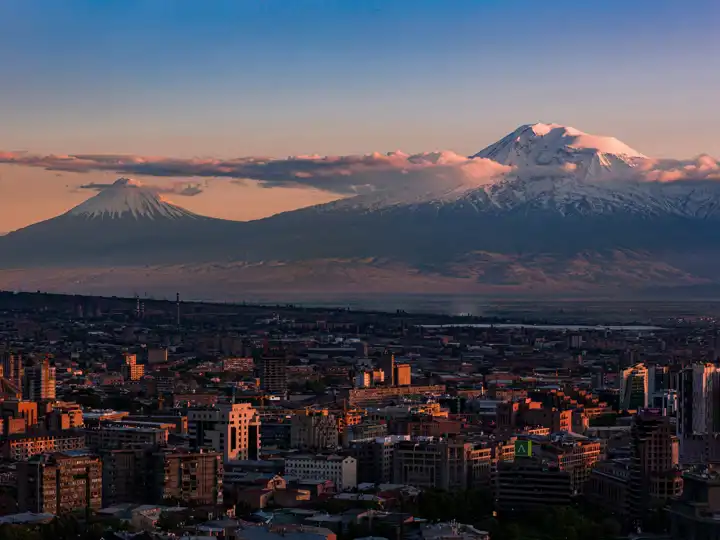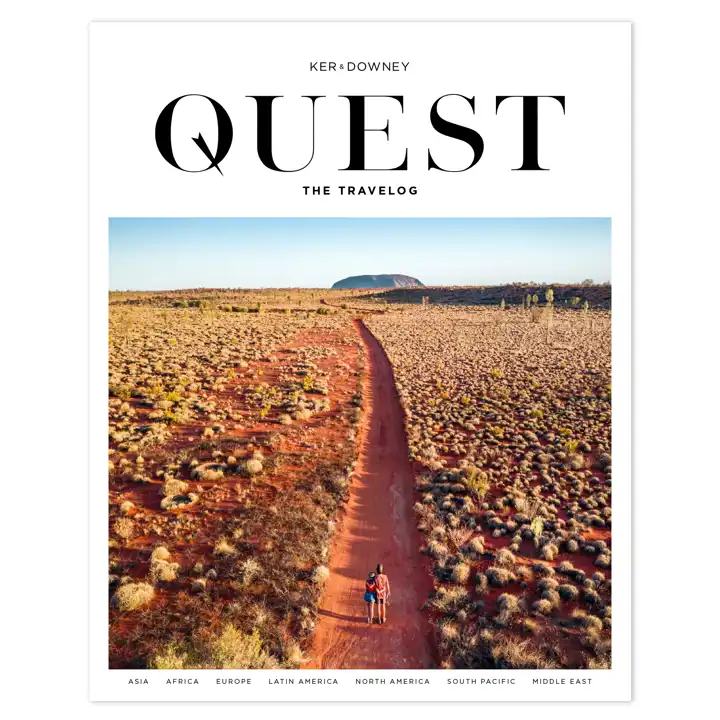Treasures Of The Caucasus
As Seen in Quest Magazine
As Told To Rina Chandarana
Armenia and Georgia, two neighboring countries nestled in the Caucasus region, offer a captivating blend of ancient history, stunning landscapes, and vibrant cities. Armenia's ancient monasteries speak to its history as the first nation to adopt Christianity, while Georgia's rich heritage and breathtaking mountain views draw visitors in. These countries form a fascinating region where the past and present converge.
Where In The World
I had to look for Armenia on a map, which, for a seasoned traveler, felt a bit humbling. Sandwiched between Turkey, Azerbaijan, Iran, and Georgia, Armenia is a small country with a population of three million, but its culture has a wide reach, with some 11 million Armenians worldwide.

Tourism hasn't blossomed as you might expect in a country with snow-packed mountain backdrops, the second-highest navigable lake in the world, world-class wines, and some of the most ancient monasteries and churches in Christianity. Even the Armenian alphabet, crafted in 405 C.E., is one of the oldest. It's rare to visit a place where so few have been.
Yerevan's Alexander Hotel in the city center is our historic base for exploring Armenia. I don't notice any McDonald's or Starbucks—a refreshing surprise. With the holiday season approaching, the city is alive in preparation. A soothing cup of mountain thyme and mint tea awaits when I return to my room after a short stroll.
The next day in the State History Museum, our guide, Aram, points out a 7,000-year-old preserved shoe. Yerevan claims to be the oldest inhabited area in the world, with human settlements dating back to the 4th millennium B.C.E. Armenia was once a stop on the legendary Silk Road where food, culture, and new ideas were exchanged, and this mélange of many places is evident in the delicious food — a blend of Mediterranean, Persian, and Asian.
Sacred Spaces
There's no shortage of churches and monasteries in Armenia, each one with Khachkars-intricately carved cross stones. Adorable dogs and cats are also a constant presence. Outside a church I refresh myself with spring water bubbling from a fountain.
Armenia was the first country to adopt Christianity in 301 C.E., and there are many sites attesting to this. At the Church of Saint Hripsime, I learn how a Roman noblewoman was among the first to bring Christianity to the country. Geghard Monastery, one of Armenia's four UNESCO World Heritage sites, is astonishingly carved into the rock.

After ducking through a narrow passageway, I enter one of the older chapels. My eyes slowly adjust to the dim light. Above, a simple dome allows a single ray of sunlight to filter in while the rest of the space remains bathed in darkness. Four women in purple and black robes sing with voices so pure and harmonious that their range from low baritone to high soprano sends shivers down my spine. The atmosphere is deeply spiritual and serene. Though I didn't understand their language, it didn't matter—we stood there, entirely present, immersed in the moment.
Culinary Traditions
Farm-to-table is necessary in Armenia since the Turkiye and Azerbaijan borders are closed, forcing Armenians to grow and raise what they eat—an array of meat, vegetables, fruit, honey, and wine. At some 7th-century ruins, I gaze at the snowy tops of Turkiye's Mount Ararat, a no-go country for Armenians since the genocide.

Pomegranates bursting with flavor are one of three sacred fruits, along with grapes and apricots. Depictions of this juicy fruit symbolizing fertility dating back to the pre-Christian age are everywhere. Stands selling fresh-pressed pomegranate juice are on street corners and by monument entrances. The local vendor halves and presses five or six pomegranates, squeezing out the tart, bright red liquid for 1,000 Dram (a bit less than $3 USD). Even the bright kernels pop up in many soups and desserts. Gata is another local favorite—a pastry with ground walnuts and butter. Dense and not overly sweet, this was the perfect mid-day snack.

Lavash is the traditional flatbread in Armenia. The dough balls are rolled and hand-tossed into an oblong shape, then placed on a special rectangular cushion/mitt and offered to the underground oven. For lunch, I wrap a piping hot lavash around crumbled cheese and a medley of fresh tarragon, parsley, and coriander.
Another day, we stop at a winery overlooking the picturesque Arpa Valley. This small, family-run operation produces wine with indigenous Areni Noir grapes. We sample whites, roses, and reds served with the traditional bread basket, cheese, olives, Armenian trout, two kinds of salads, and a baked apple for dessert. My tastebuds are never disappointed in Armenia.
Welcome to Georgia
After getting our passports stamped and crossing the land border, we are in neighboring Georgia. Despite its geographic proximity to Armenia, we're now in a country with a completely different language and religious traditions rooted in Orthodox Christianity.
Armenians and Georgians speak either English (younger people) or Russian (older people) to communicate with each other. Based in Tbilisi, I make day trips to Khaketi and Kazbegi. There is never a bad view on this journey through Armenia and Georgia. We drive through beautiful countryside with the Greater Caucasus as the backdrop every day. In Georgia, I want to spend less time in historic churches and more time out in nature, hiking and soaking in the mountain air.

Meanwhile, Tbilisi, the country's capital, has a young, vibrant energy. The old part of town is packed with sidewalk cafes that seem buzzing at all hours of the day serving up khinkali (dumplings) and khachapuri (a pizza-like dough with cheese). Eggplant rolls served with walnut paste is one of my favorite meals. I could have easily spent another day or two wandering the city's streets, eating the food, and visiting the museums.
We rarely get to explore countries that aren't on everyone's travel radar. Traveling through Georgia and Armenia requires a curious mind and an open heart. Visiting these countries feels authentic, away from typical touristy places. Now, I'll eagerly point them out on a map to anyone searching for a unique destination.
Pro Tip! Start your trip in Armenia and end in Georgia. And bring an extra suitcase to take home the wine.
Wanting to try something new? Contact a Ker & Downey travel designer to explore a new part of the world with ease.

Rina Chandarana
Rina's love for travel started as a little girl reading books about faraway places. Since then she's visited countries all over Europe and Asia. Her favorite part about travel is talking to the locals to learn more about their traditions, faith, and culture.
Inquire Now
Quest Magazine
Dedicated to the experiential style of Ker & Downey travel, QUEST Magazine features eye-opening content that focuses on unforgettable experience, unheard-of destinations, and the very best our world has to offer. Each issue is packed with insider information, what's new in the world of travel, and editorial pieces that focus on our global culture, philanthropy, and transformative travel.
Read The Spring 2025 IssueSee What We Are Up To
Subscribe to our Weekly Newsletter for Travel Tips and Insider Guides for Planning your Next Journey!
